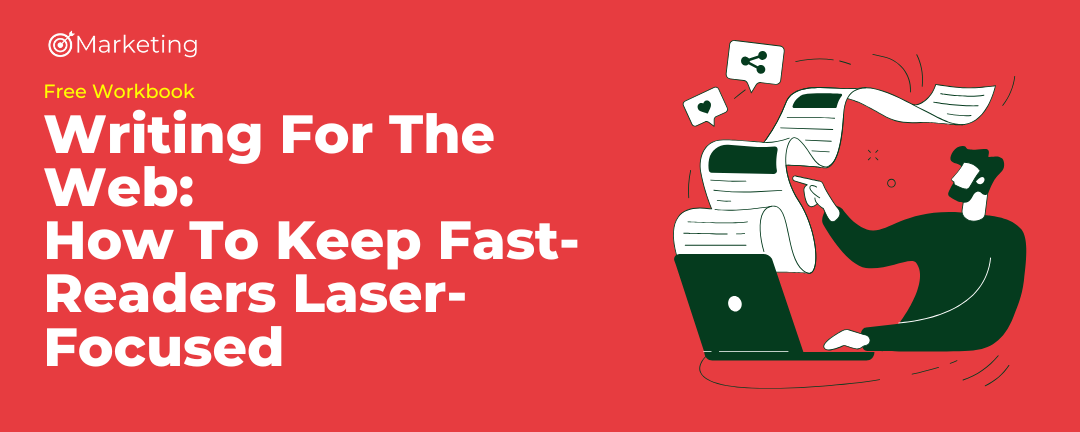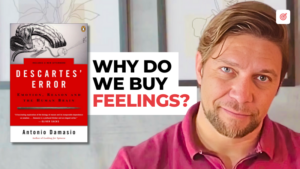
.
✅ FREE WORKBOOK: Writing For The Web: How to Keep Fast-Readers Laser-Focused
Listen the Podcast Version
Ever wondered how to make your audience engaged in a world with an 8-second attention span?
Have you asked yourself: What’s the secret to delivering valuable content that keeps my audience engaged enough to convert?
Well, stick around because today we’re going to learn 3 mental triggers that will turn your online writing into an engagement magnet!
But before we get into it, make sure you grant your lifetime access to our free WorkBook: Writing For The Web: How to Keep Fast-Readers Laser-Focused.
This is your chance to attract cost-effective leads and turn them into lifelong customers using only your keyboard powered by AI.
The Psychology of Online Reading
The digital landscape presents both an expansive canvas and a maze of challenges for online writers.
Audiences are overwhelmed by Digital Distractions from countless notifications, options, and interruptions.
We’ve learned to consume content in bits, skimming through audio, videos, and writings.
Digital Distractions
A 2015 Microsoft study found that the average human attention span has decreased from 12 seconds in 2000 to just 8 seconds.
To put it in perspective, that’s even less than a goldfish, which boasts a whole 9 seconds.
Yeah, humans 8, goldfish 9. Not a score we should be proud of.
So, let’s address the goldfish in the room:
In his book Deep Work, Cal Newport outlines that our decreasing ability to focus on one task deeply is partly because:
“Our brains are being trained, day in and day out, to crave the instant gratification that comes with digital notifications.”
For content creators, this poses a unique challenge and opportunity at the same time.
How do we capture the essence of our message in this age of online writing and make every second count?
Jonah Berger, in his book Contagious: Why Things Catch On, suggests that:
“Content that evokes strong emotions, whether positive like inspiration or even negative ones like anger, tend to be more shareable and memorable.”
To Berger’s point, to counter the decreasing attention span we will explore 3 mental triggers to boos audience engagement:
- The Power of Storytelling: The need to encapsulate messages within compelling narratives.
- The Inverted Pyramid Principle: The balance of depth and brevity, ensuring readers grasp the essence of your message immediately.
- The Principle of Reciprocity: The art of fostering genuine retribution from your audience AKA conversions.
Let’s navigate these challenges, redefine our approach to online writing, and emerge as effective communicators in this digital age.
Online Writing: The Power of Storytelling
The first of the 3 Mental Triggers to Boost Engagement is The Power of Storytelling.
The digital realm of online writing may seem vast and impersonal, but it’s just another campfire, another gathering.
Every story has a simple structure:
- Character.
- Problem.
- Resolution.
The character is the hero, your target audience, the conflict is the heart of the story, and the resolution is where everything comes together.
For example:
A cat sitting on a mat is not a story. A cat sitting on the dog’s mat is a story.
So, in storytelling, everything starts with a problem. If you don’t have a problem, you have no story to tell.
That problem will give the character a trajectory that will set the scene for the transformation, which is the adventure of navigating the problem.
The end of that transformation is the resolution.
In marketing and sales, it’s not the best product, but the best story that wins.
Why?
Because people are not looking for products, they are looking for a better version of themselves. The resolution of their stories.
Online Writing: The Inverted Pyramid Principle
The second of the 3 Mental Triggers to Boost Engagement is The Inverted Pyramid Principle.
That is a classic journalistic approach where the most vital information is presented at the beginning of the piece.
This ensures that the audience gets the main idea as soon as possible even if they are skimming.
How can you accomplish that in your online writing?
Subheadings
Using subheadings is part of this principle. Think of them as micro-titles, each one giving a snapshot of the paragraph’s content.
If a reader were to only read the subheadings, they should still get a coherent understanding of your writing piece.
Bullet points
Bullet points are also part of this principle because they stand out and encapsulate information.
For crucial takeaways or summaries, always consider bullet points or numbered lists.
As Jakob Nielsen, a web usability expert, states:
“Reading is not dead, but it’s about selecting the important parts and skipping the rest.”
Remember, it’s not about diluting content but about making it accessible, ensuring that even in a fleeting glance, the core message resonates and leaves an impact.
In the Writing For The Web Workbook, you will learn 15 practical tools to write content that attracts, engages, and converts cost-effective leads into lifelong customers using only your keyboard powered by AI.
By granting your FREE lifetime access to this workbook today, you will not only master the art of online writing but also, have access to all future updates at no cost.
The link is the description.
Online Writing: The Principle of Reciprocity
The third and last of the 3 Mental Triggers to Boost Engagement is The Principle of Reciprocity.
In the book Influence: The Psychology of Persuasion, Robert Cialdini places reciprocity as one of the six pillars of influence.
He points out that:
“We’re not just wired to give back, but often the return favor exceeds the original gesture.”
This understanding is a goldmine for content creators.
Think about it.
In the digital age, where content is omnipresent, why do certain blogs, YouTube channels, or websites amass loyal followings?
One primary reason is the consistent delivery of free and high-quality content.
By giving away value-packed articles, videos, xor e-books, creators make their audience feel in debt.
This often translates into likes, shares, comments, and purchases.
As Gary Vee often emphasizes in his works:
Provide “jab, jab, jab, right hook”
Meaning, give, give, give, and then ask.
That is the key to reciprocity.
The first three jabs are where you offer genuine value, and the right hook is when you make your ask.
As value compounds, so does the audience’s engagement and loyalty.




